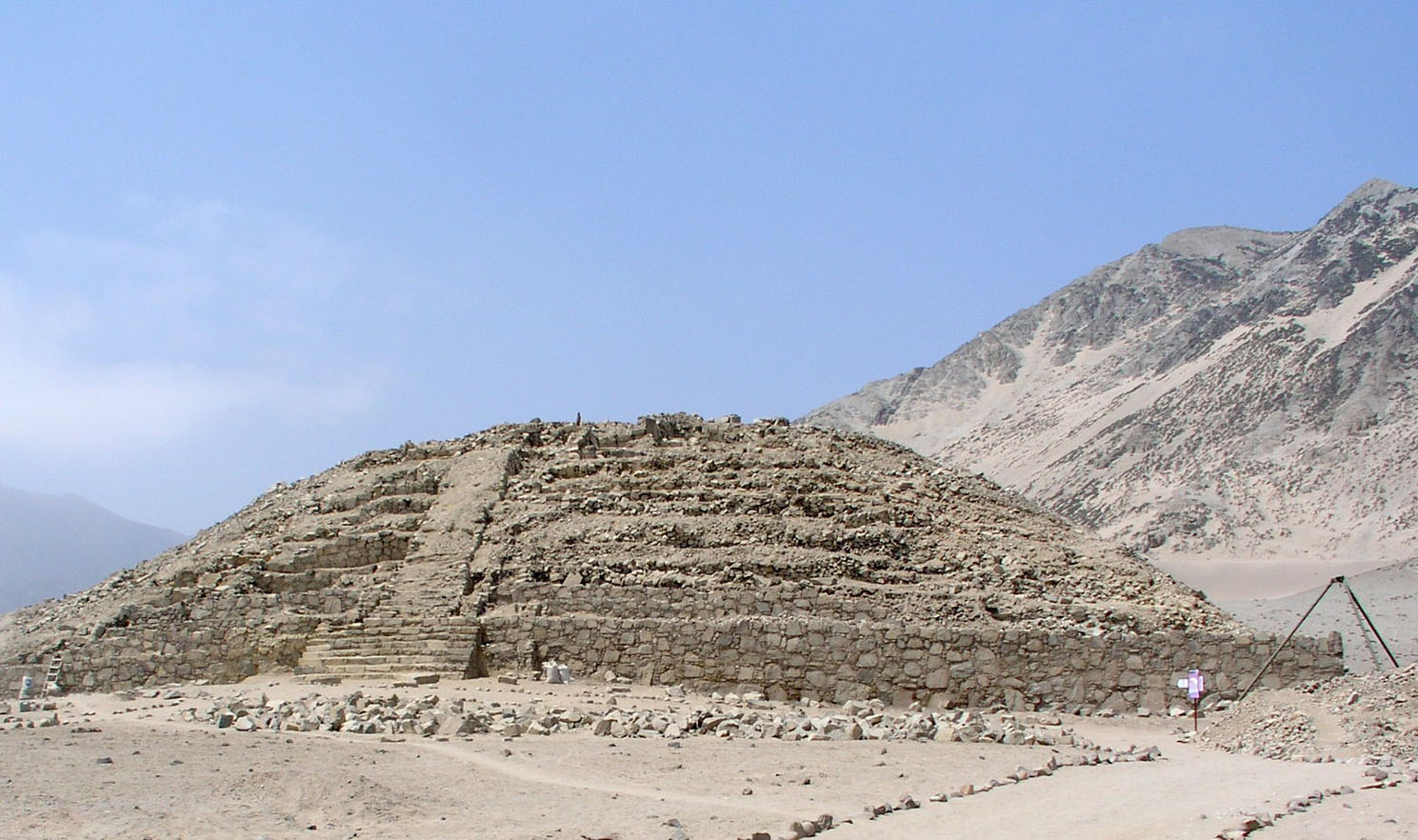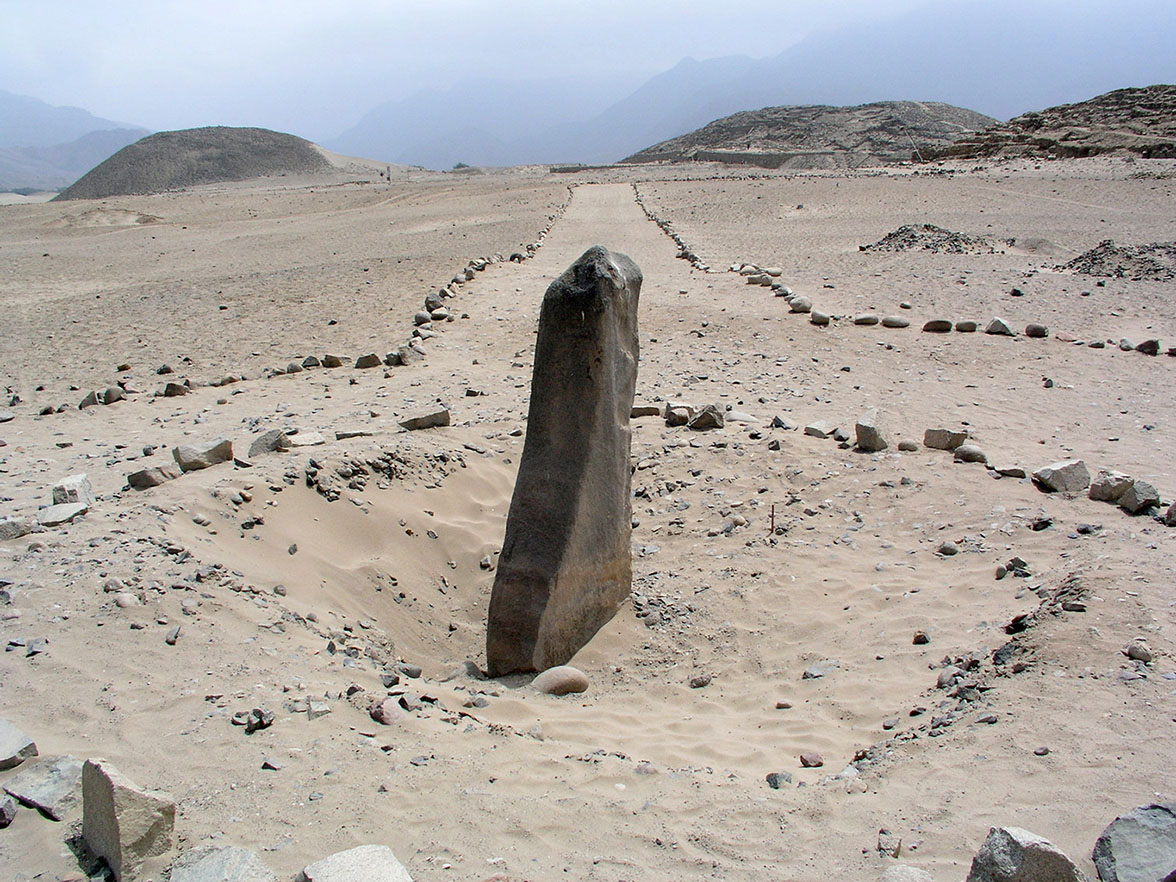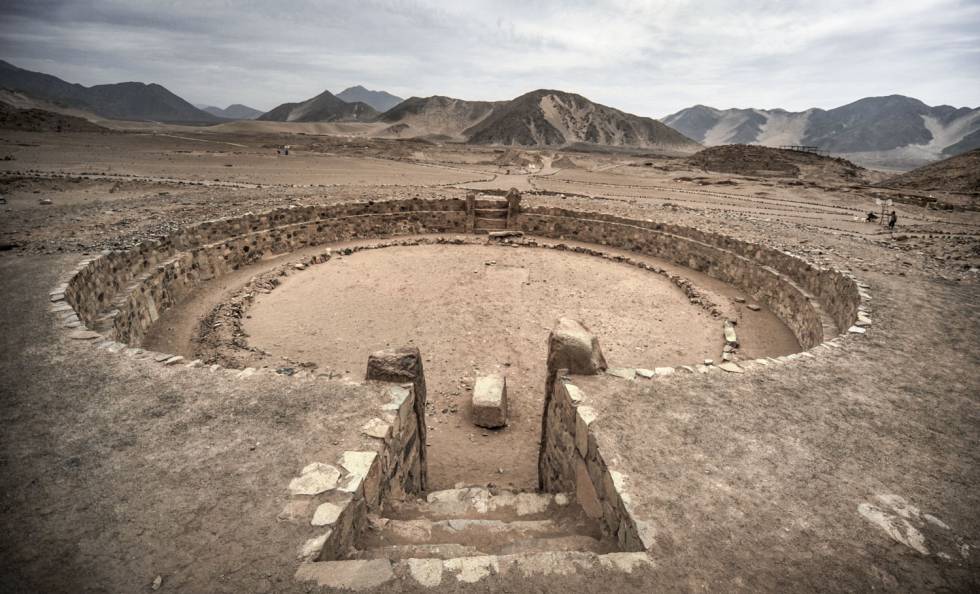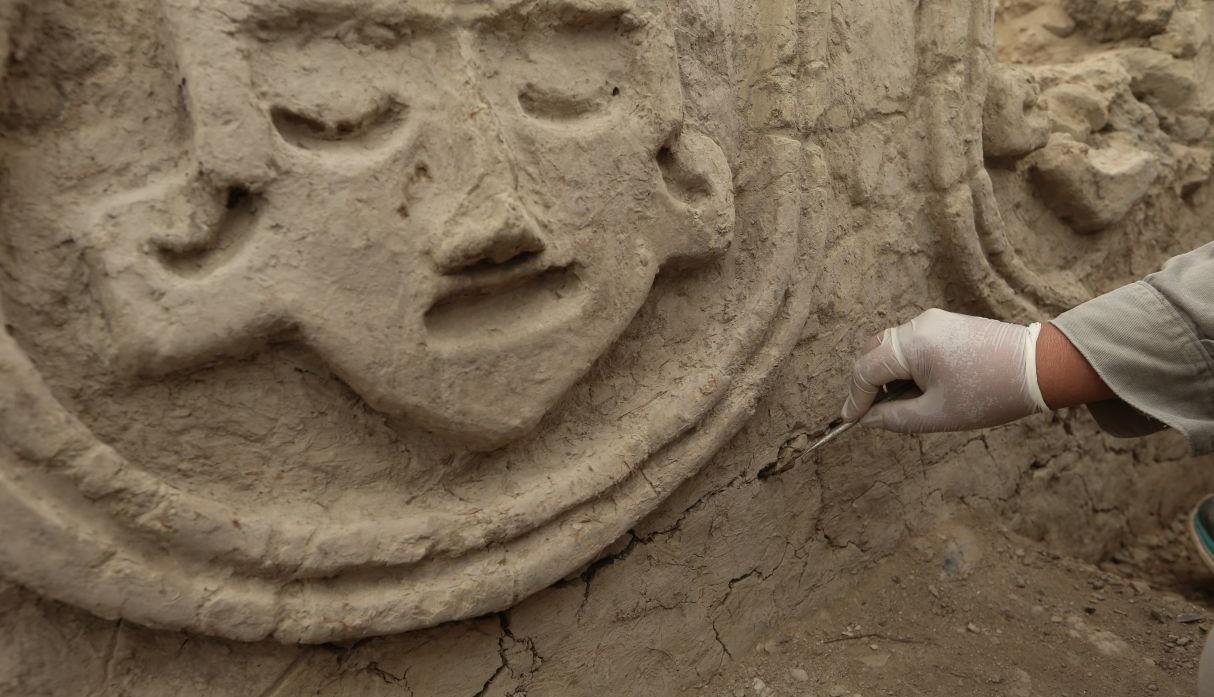There were about 1,500 years left for the first monumental constructions of the Mayans to emerge in Mesoamerica when the majestic Sacred City of Caral began to rise in the Peruvian desert, the center of a civilization that covered a large territory and lasted for more than a thousand years.
"This is the oldest civilization ever found in America and, without a doubt, one of the oldest civilized centers in the world, almost as old as Mesopotamia and Egypt," says archaeologist Ruth Shady, who since 1996 has been working on the rescue of Caral and confirmed its validity between 3,000 and 1,800 BC. through 146 radiocarbon dates.
The site, located in the middle valley of the Supe River, 138 km N.E. of Lima, Peru, extends over 68 hectares and contains a nuclear zone with 32 public buildings and several residential complexes occupied by hierarchical officials and their families, as well as two peripheral housing areas bordering the valley, inhabited by the rest of the population. population.
The nuclear zone, characterized by its monumentality, presents the largest public and residential buildings in the city. In the so-called Caral Alto there are seven pyramids, two sunken plazas in front of two pyramids and two public meeting spaces (Plaza Central and Plaza de la Huanca); buildings for officials and a set of workshops and homes for service personnel.
In the southern part, or Caral Bajo, the buildings are smaller, although next to the residential complex the Amphitheater and the Circular Altar building stand out.
In November 2015, UNESCO declared the city of Caral-Supe a World Heritage Site.
Monumentality, distinctive feature
Standing at 28 m high, 110 m wide and 150 m long, the Great Pyramid towers over the rest of the buildings, forming the most significant urban and socially significant complex along with a central plaza probably intended for fairs, a sunken circular plaza. and a large structure of stepped platforms. Due to its size, the Greater Pyramid is followed by the so-called Central Pyramid, which is 18 m high to the west of the central plaza and on whose side a ritual plaza opens.
Towards the east and in third place in terms of volume, is the La Galería pyramid, so called because of the underground gallery located at its summit, whose function is unknown. For its part, the La Cantera pyramid has at its top a circular altar with a large hearth and underground conduits that ensured the permanent lighting of the fire.
Among the remaining smaller buildings in Caral Alto it is worth mentioning the Minor pyramid, the La Banqueta temple, the two fused pyramids and the La Huanca pyramid, in front of which stands a 2.15 meter high monolith.
Caral Bajo has the Amphitheater temple, a walled complex with a sunken plaza in the shape of an amphitheater 29 m in diameter and the Circular altar building also with a hearth and underground ducts.
Without walls, cradle of Andean civilization
With a population that could have reached three thousand inhabitants, no defensive walls or weapons or signs of battles have been found in Caral. On the contrary, the presence of products coming from the sea (23 km away), or from remote areas such as the Ecuadorian Andes and the Amazon allows us to think of this city as an important center for the peaceful exchange of merchandise, whose local engine would be cotton production.
Despite having an abundance of agricultural products thanks to an organized irrigation system, cotton in its various natural shades - brown, brown and beige in all its shades - was the most valuable raw material for the production of clothing, footwear, bags. , ropes, twine and nets. The importance of the latter is given by their use in fishing and also in hunting, as illustrated by the missing mural of the northern huaca Ventarrón dated to 2,500 BC.
The interaction and link of Caral with other centers on the Supe River - especially in Áspero, a satellite city on the Pacific, or in Miraya, Lurihuasi and Chupacigarro - and even further away, in Vichama and Bandurria in the Huaura valley, is especially evident. in the organization of space and monumentality. Proof of this are the four scale models found, one of which clearly shows pyramidal buildings with an attached circular plaza, a main staircase and superimposed platforms, revealing the careful urban planning of Caral and the sites under its influence.
Other sites in a much larger area, such as Las Haldas and Sechín Bajo (Casma valley), Kotosh (Huallaga basin), Huaricoto and La Galgada (in the Ancash mountain range) with which Caral shared practices and beliefs, and even Ways of life such as the coexistence of ayllus or extended families, speak of a dynamic network of reciprocity where the foundations of the future Andean ethos were laid.
Given its extension and building characteristics – pyramids, temples, plazas, hearths and altars, as well as signs of rituals inside the homes – Caral was undoubtedly the ceremonial center of the entire region, which is why it is classified as a Sacred City. , until its decline and abandonment for climatic reasons.
About earthquakes, fires, astronomy, quipus and gender equality
Even without knowing ceramics, its inhabitants used complex physical, astronomical and mathematical principles, the result of empirical observation. An example of this is the shicra, a mesh bag woven with resistant plant fibers; They were used loaded with stones of different sizes that, when placed as filling for the pyramidal platforms, gave stability to the structures during earthquakes by distributing the seismic waves throughout the building. Its use was detected along 400 km of the north-central coast of Peru and continues to the present.
Remains of shicras. Caral, Peru. Photography: Courtesy Wikimedia Commons.
Another notable mechanism used in Caral was the system of air ducts intended to fan the fire during religious rites by narrowing them, a physical phenomenon scientifically called the Venturi effect, which occurred simultaneously with the construction of complex irrigation networks. for crops and water supply to the city.
They also had a calendar of ritual celebrations and agricultural, civic and exchange fair activities. An underground enclosure would also indicate the presence of an astronomical observatory, completing the meaning of the geoglyphs and lines scattered nearby, as well as the orientation of the public buildings.
Lacking writing – a fact currently under discussion – the discovery of a quipu or set of colored threads in which different knots were tied in order to accurately record the products and quantities with which they operated, evidences their ancient use. Six quipus painted on three lithic blocks in the Minor Pyramid corroborate its ancestral use.
In addition to the discovery of musical instruments made of pelican and condor bones – 38 cornets, 32 transverse flutes and 4 antaras, pan flutes – the exhumation in Áspero – a fishing town dependent on Caral – of a female mummy surrounded by a luxurious funerary trousseau , talks about his possible role and status, similar to that of men of the highest class in the hierarchical Caraline society. And she allows Ruth Shady to highlight the timeless projection of the Caral Civilization by stating that there "both men and women had the possibility of occupying positions of power and achieving a high social position more than four thousand years ago." An issue still unresolved in current societies.
Sources:
Ruth Shadi, La Civilización Caral: sistema social y manejo del territorio y sus recursos. Su trascendencia en el proceso cultural andino, en Boletín de Arqueología PUCP, Núm. 10, 2006. (SEE)
Mark Miller, (SEE)
Edgar Jhonatan Rojas Nuñez, (SEE)



